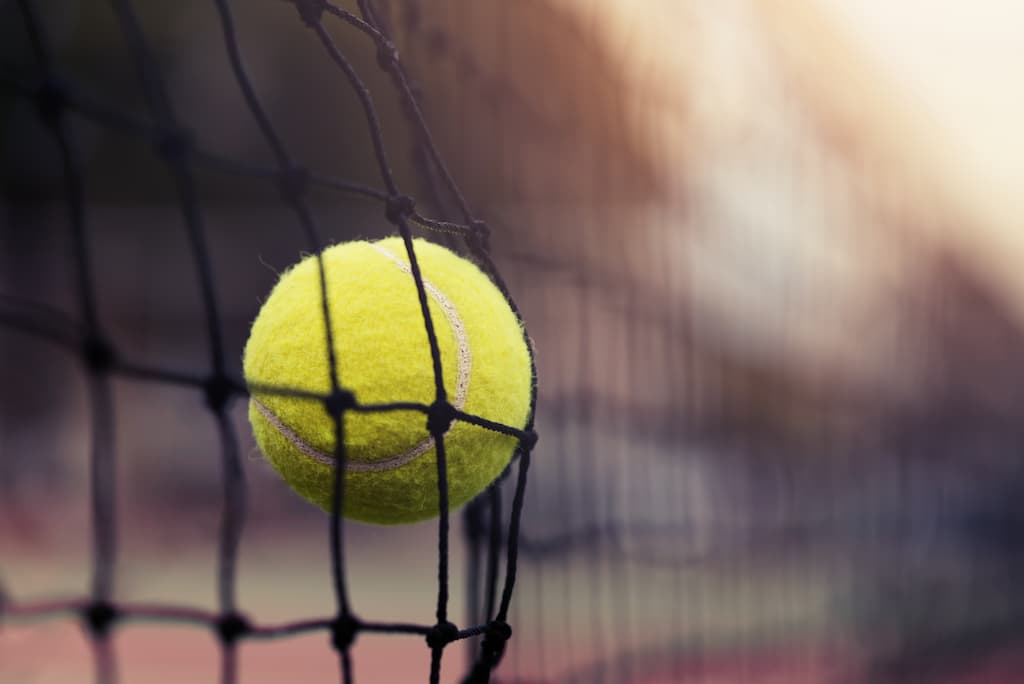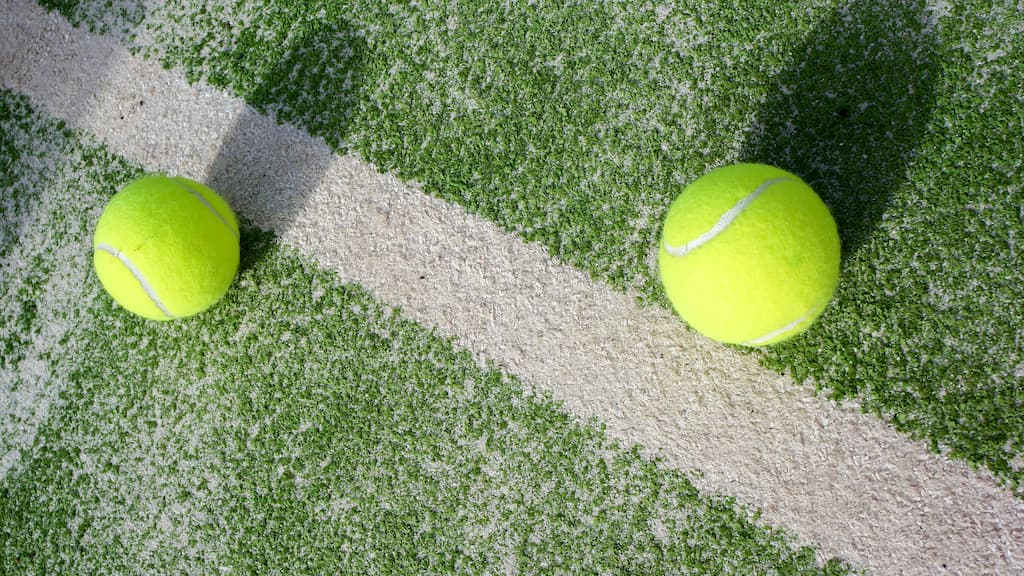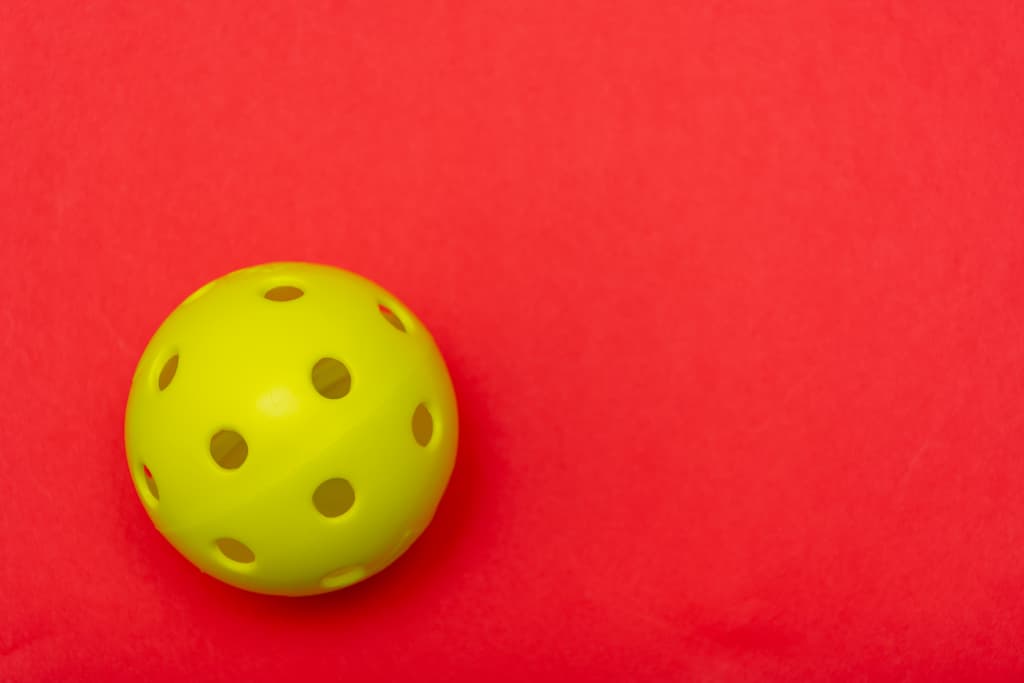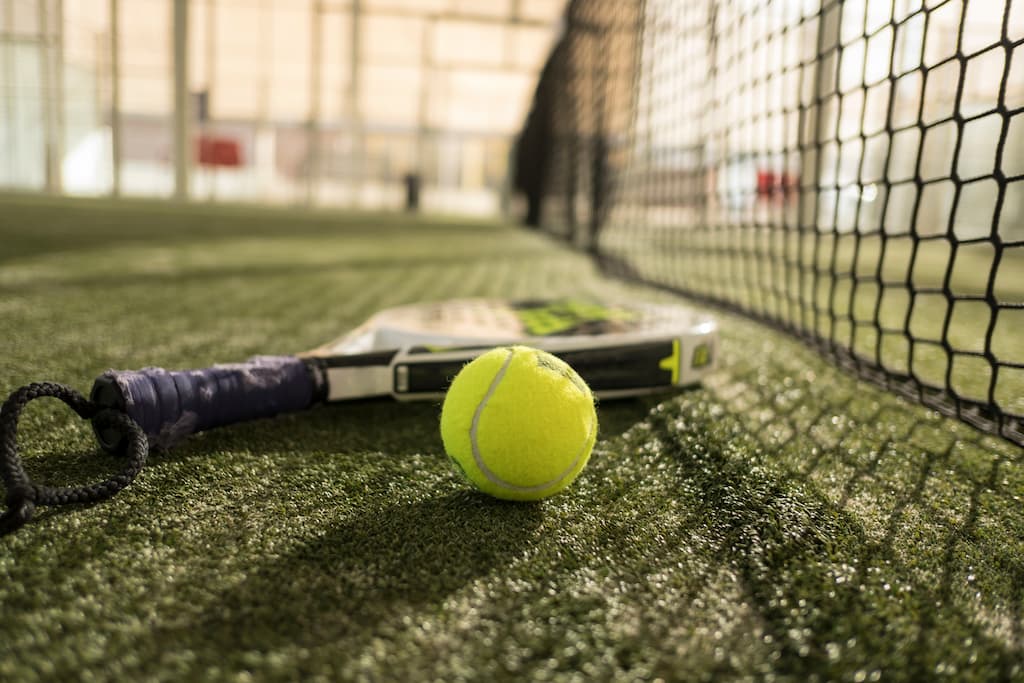Padel is a racquet sport played in pairs and is similar to tennis. However, some key differences set it apart from tennis.
One of the main differences is the court size. Padel courts are much smaller than tennis courts, which makes the game faster and more intense. The walls surrounding the court are also used in play, adding an extra dimension to the game. Another notable difference is the type of ball used. Padel balls are smaller and less pressurized than tennis balls, which makes them easier to control and slower in flight.
Padel Ball Basics

Padel ball is a vital component of the sport of Padel, a racquet sport similar to tennis and squash. The ball is specially designed for the sport, and it differs from traditional tennis balls in several ways.
One of the most important differences is the internal pressure of the ball. Padel balls are typically pressurized to a lower level than tennis balls, which makes them softer and slower. This lower pressure also makes the ball less likely to bounce high, which is important in the enclosed court used for the Padel.
In terms of its physical characteristics, the Padel ball is round and typically weighs between 56 and 59 grams. Its diameter is between 6.35 and 6.77 centimeters, and it is made of rubber with a felt covering. The felt provides grip and helps to slow down the ball, while the rubber gives it its bounce.
The weight and size of the ball are regulated by the International Padel Federation, which sets standards for the sport. These standards help to ensure that all players are using the same type of ball, which promotes fairness and consistency in the game.
Importance of Choosing the Right Ball
When it comes to playing Padel, choosing the right ball is crucial. The ball is the most important piece of equipment in the game, and it can greatly impact the overall performance and enjoyment of the players. Here are a few reasons why choosing the right ball is so important:
Consistency
Using the same type of ball throughout a match or tournament ensures consistency in the game. Different types of balls can have varying levels of bounce, speed, and spin, which can affect the players’ ability to control the ball and make accurate shots. By choosing the right ball, players can maintain a consistent level of play and avoid unexpected surprises.
Durability
Choosing a ball that is durable and can withstand the wear and tear of the game is also important. Balls that are easily damaged or lose their shape can affect the game’s flow and require constant replacement, which can be frustrating for players. Opting for a high-quality ball can save players time and money in the long run.
Performance
The right ball can also enhance the game’s performance. Balls that are designed for specific playing surfaces or weather conditions can improve the players’ ability to control the ball and make precise shots. For example, a ball designed for use on clay courts may have a slower bounce, which can make it easier for players to execute drop shots.
5 Steps on Choosing the Right Padel Ball
Choosing the right Padel ball is a critical aspect that impacts the quality and enjoyment of your Padel sports experience. The type of ball selected influences how the ball bounces, affecting the game’s pace, bounce, and overall playability. Here are five elaborate steps to assist in selecting the perfect Padel ball that aligns with your playing conditions and style.
Step 1: Understand the Types of Balls
Training Balls
Training balls are tailored for beginners and those keen on improving their skills in the Padel sport. These balls are softer and more durable, ideal for extended use. Although perfect for learning and practice, they might not offer the enhanced ball bounces experienced with competition balls.
Competition Balls
These balls are designed for the experienced and professional players in the Padel sport, known for their pronounced ball bouncing characteristics and speed. Although they deliver an unmatched playing experience, their rapid wear is a trade-off for enhanced performance.
Step 2: Consider the Playing Conditions
Altitude
Playing at different altitudes affects how the ball bounces. Specialized balls are available for varying altitudes. At higher altitudes, a ball with less pressure is recommended to counter the naturally increased bounce, ensuring a balanced and enjoyable game.
Temperature and Humidity
The Padel sport is influenced significantly by temperature and humidity, which impact the ball’s bouncing properties. In cooler environments, a ball that retains its bounce and speed is essential, while in warmer settings, a heat-resistant ball ensures consistent performance.
Step 3: Check the Ball’s Pressure
Pressureless Balls
Pressureless balls are celebrated for their consistent bounce, a crucial factor in both practice and recreational Padel games. Their enduring nature ensures that the quality of ball bounces remains constant over time.
Pressurized Balls
These balls, characterized by their optimal bounce and spin, unfortunately, lose pressure over time. They are suitable for competitive play where the quality of the ball bouncing significantly influences the game’s outcome.
Step 4: Look at the Material and Durability
The material’s quality and durability directly impact how the ball bounces during a Padel game. A ball made from high-quality rubber not only ensures an optimal bounce but is also durable, which is especially vital for frequent players aiming for consistent performance and bounce quality.
Step 5: Test Different Brands
Brand Reputation
Exploring various brands is essential. Focus on those known for their quality, ensuring that the ball bounces consistently and is durable. Reviews and recommendations from fellow Padel players can be a rich resource.
Personal Preference
Every player has distinct preferences influenced by how the ball bounces and handles during play. Trying out different brands allows players to find a ball that aligns with their playing style, ensuring an enhanced Padel sports experience.
Bonus: Player’s Skill Level
The player’s skill level is integral in selecting a ball, especially considering how the ball bounces. Beginners might benefit from a slower, more controllable ball to aid in skill development. In contrast, advanced players often seek balls offering enhanced bounce and speed to challenge and elevate their gameplay in the competitive world of Padel sport.
What is The Difference Between Tennis Balls and Padel Balls?

Tennis and Padel, though similar, are distinct sports, each requiring balls with unique characteristics tailored to their respective playing environments and game dynamics. The differences between these balls become apparent when considering the bounce, speed, and durability needed for a tennis court versus an enclosed court.
Tennis Balls
Tennis balls are designed specifically for the nature and requirements of the tennis court. They are made to cater to a game that is faster and has a playing surface that can vary from grass to clay to hard court. The bounce and speed of tennis balls are optimized for these open, more extensive courts. Tennis balls are made with a felt covering that is designed to withstand the wear and tear of these various surfaces, ensuring durability and consistent performance.
Padel Balls
Padel balls, on the other hand, are crafted for an enclosed court setting. Padel courts are smaller and surrounded by walls, a feature that significantly influences the ball’s design. Padel balls are similar in appearance to tennis balls but are designed with less pressure. This feature makes them slower and ensures they have a lower bounce, characteristics essential for the confined playing area of Padel.
Comparing Tennis and Padel Balls
The core distinctions between tennis and Padel balls can be attributed to the specific needs of tennis and Padel sports. While tennis demands balls that can maintain bounce and speed across larger, open courts, Padel necessitates balls that are adapted to the restricted, walled courts. The walls in Padel play a significant role in the game’s dynamics, making it essential for the balls to have reduced speed and bounce to accommodate the play style and court size.
What is The Difference Between Pickleball Balls and Padel Balls?

Pickleball Balls
Pickleball balls are unique and instantly recognizable. They are made of durable plastic and feature numerous holes, typically ranging between 26 to 40, which are strategically placed to influence the ball’s flight and bounce. The design caters to both indoor and outdoor playing environments, with specific models optimized for each setting.
For outdoor play, the balls are constructed to counteract environmental elements like wind, ensuring consistent flight and playability. Indoor pickleball balls are typically softer and feature larger holes, catering to the controlled environment and playing surfaces they are designed for. The lightweight nature of these balls slows down the game’s pace, aligning with pickleball’s strategic and tactical gameplay.
Comparing Pickleball Balls and Padel Balls
A comparative look at pickleball and Padel balls unveils distinct differences tailored to the unique requirements of each sport. Pickleball balls, with their plastic construction and aerodynamic hole patterns, are designed for controlled flight and bounce. They cater to the strategic, measured pace of pickleball, where player skill and strategy take precedence over speed.
In contrast, Padel balls are crafted for a game defined by agility, precision, and speed. Their reduced internal pressure and resultant lower bounce are pivotal for the enclosed court dynamics, ensuring that the game remains fast-paced yet controlled. The felt exterior not only influences the ball’s flight but also its responsiveness, allowing players to execute a variety of shots with precision.
Frequently Asked Questions
What are the differences between Padel and tennis balls?
Padel balls are smaller and less dense than tennis balls. They are also made with a different rubber compound that gives them a lower bounce. This is due to the smaller court size in Padel, which requires a slower ball for better control.
Where are the best places to play Padel tennis near me?
The best places to play Padel tennis near you will depend on your location. However, many sports clubs and recreational centers offer Padel courts. You can also check online for Padel clubs and leagues in your area.
What is the difference between Padel and pickleball?
Padel and pickleball are both racquet sports, but they have some key differences. Padel is played on a larger court with walls, while pickleball is played on a smaller court without walls. Padel also uses a smaller and less dense ball than pickleball.
What are the basic rules for playing Padel?
The basic rules for playing Padel include serving underhand, letting the ball bounce once before hitting it, and allowing the ball to hit the walls. Players must also stay within their designated court area and avoid hitting the ball out of bounds.

